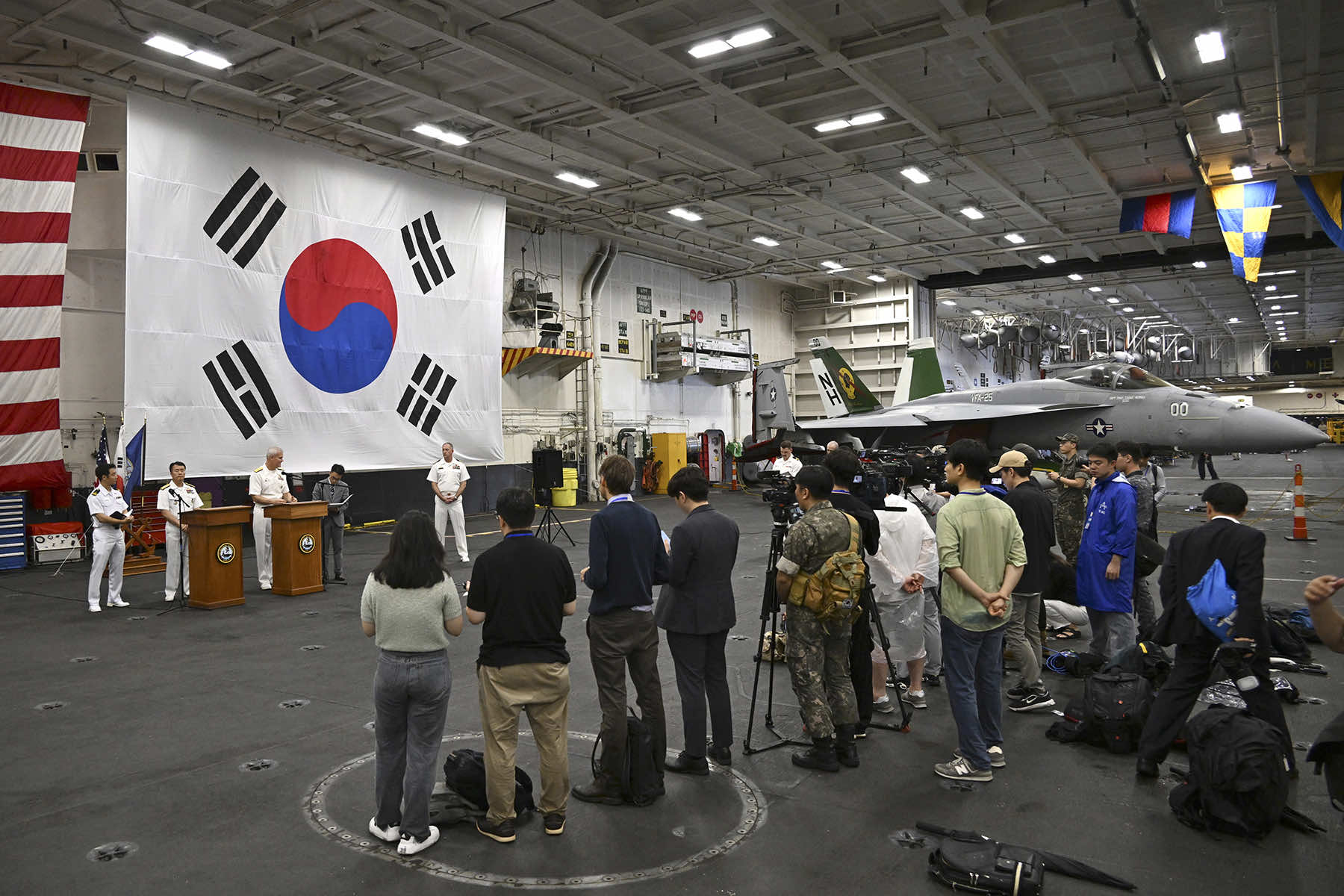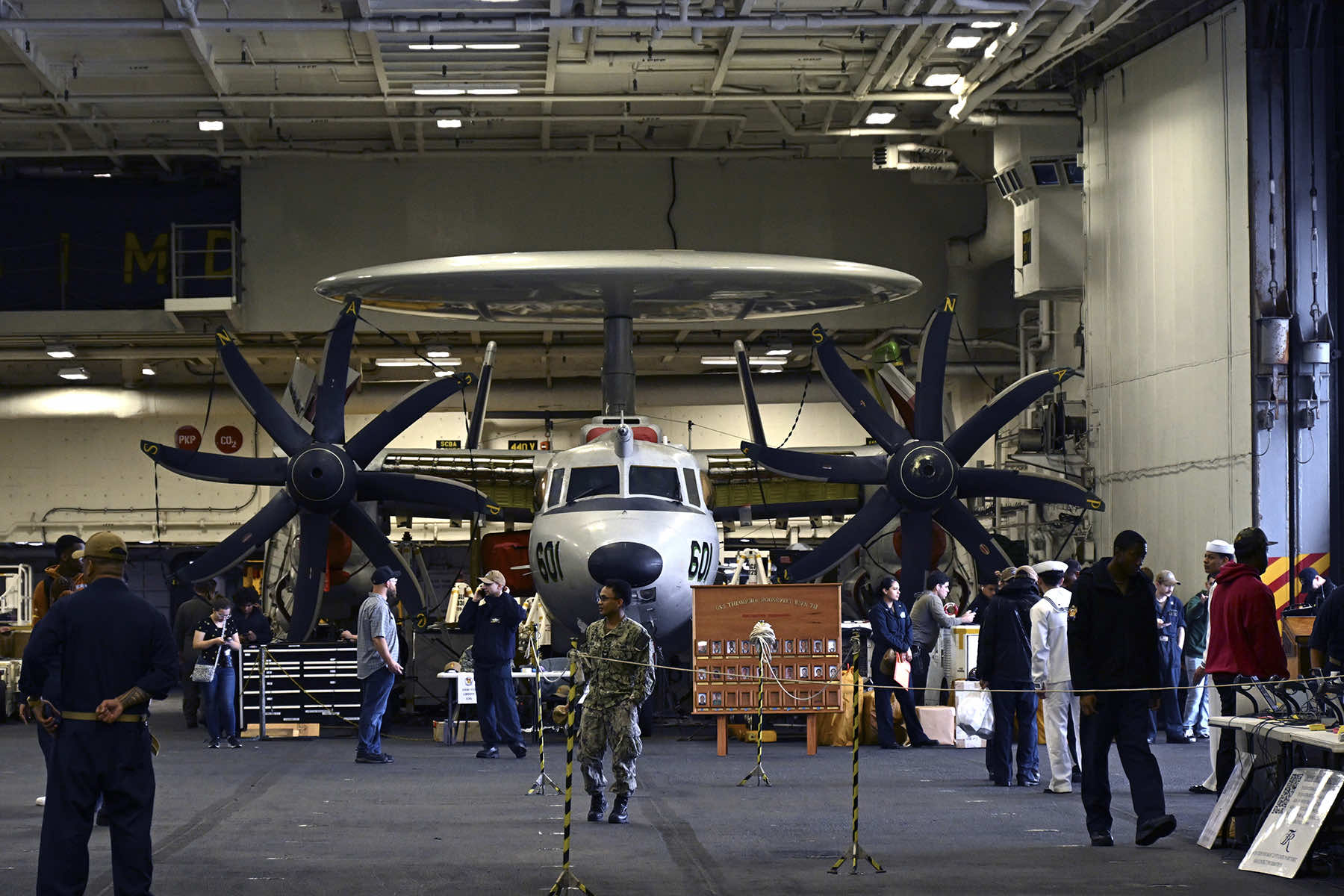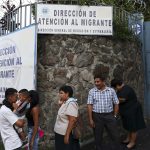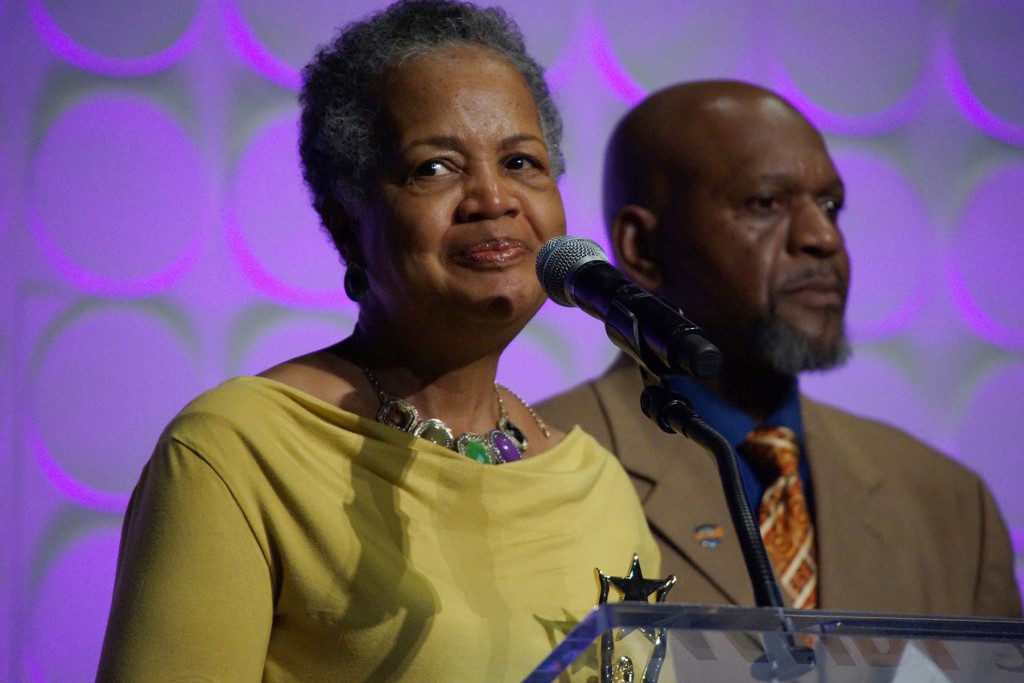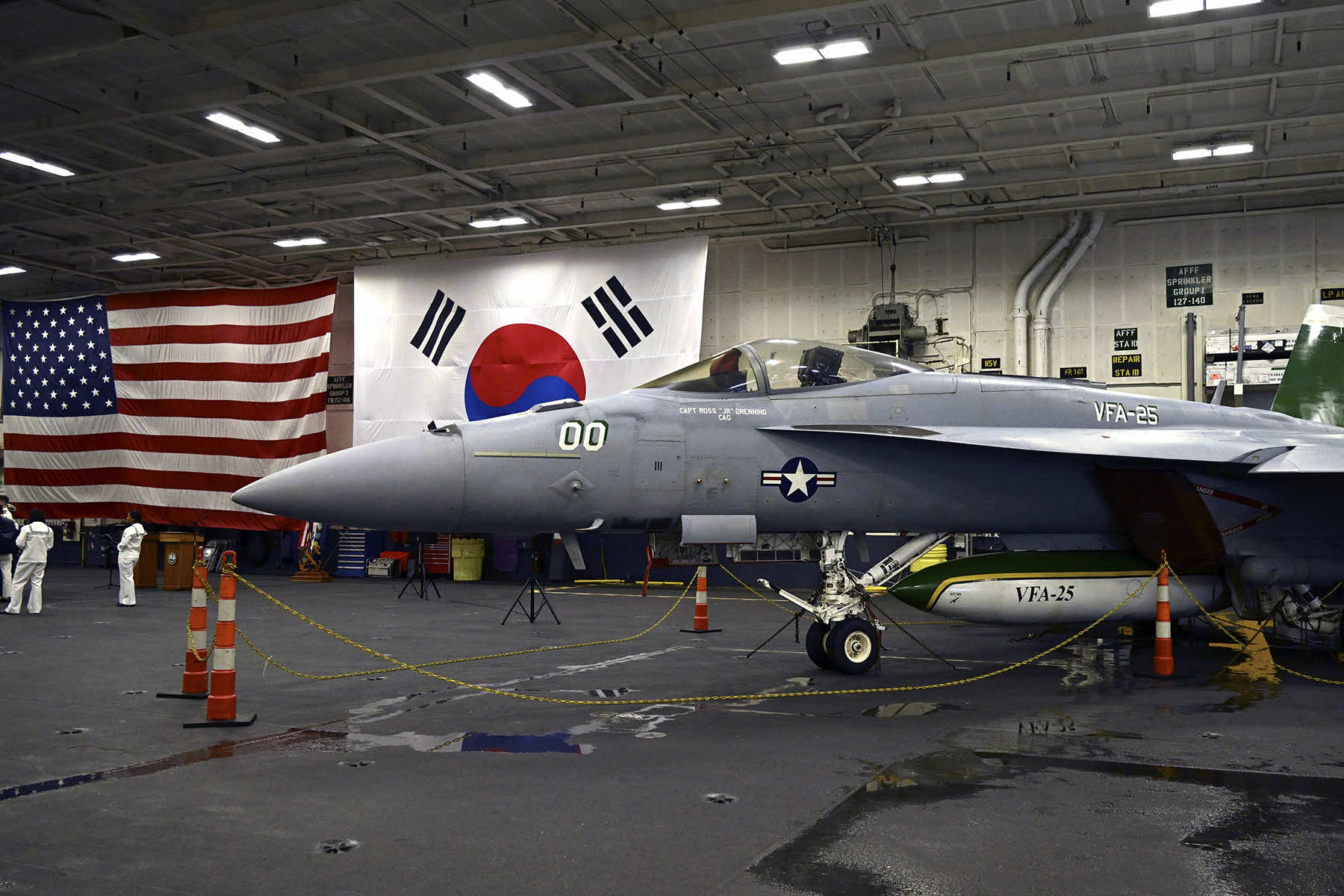
A nuclear-powered United States aircraft carrier arrived on June 22 in South Korea for a three-way exercise stepping up their military training to cope with North Korean threats that escalated with its alignment with Russia.
The arrival of the USS Theodore Roosevelt strike group in Busan came a day after South Korea summoned the Russian ambassador to protest a pact reached between Russian President Vladimir Putin and North Korean leader Kim Jong Un this week that pledges mutual defense assistance in the event of war.
South Korea said the deal poses a threat to its security and warned that it could consider sending arms to Ukraine to help fight off the Russian invasion as a response — a move that would surely ruin its relations with Moscow.
Following a meeting between their defense chiefs in Singapore earlier in June, the United States, South Korea and Japan announced Freedom Edge. The new multidomain exercise is aimed at sharpening the countries’ combined response in various areas of operation, including air, sea and cyberspace.
The Theodore Roosevelt strike group will participate in the exercise that is expected to start in June. South Korea’s military did not immediately confirm specific details of the training.
Rear Admiral Christopher Alexander, commander of Carrier Strike Group Nine, said the exercise was aimed at sharpening tactical proficiency of ships and improving interoperability between the countries’ navies “to ensure we are ready to respond to any crisis and contingency.”
“The timing of the exercise has been well planned out. This was not meant to be a message. It is not in response to Russia and North Korea coming together,” said Rear Admiral Alexander. “Our alliance has worked together for well over seventy years. This is just one exercise that is continuing to strengthen our relationship.”
South Korea’s navy said in a statement that the arrival of Theodore Roosevelt demonstrated the strong defense posture of the allies and “stern willingness to respond to advancing North Korean threats.” The carrier’s visit comes seven months after another U.S. aircraft carrier, the USS Carl Vinson, came to South Korea in a show of strength against the North.
The Theodore Roosevelt strike group also participated in a three-way exercise with South Korean and Japanese naval forces in April in the disputed East China Sea, where worries about China’s territorial claims are rising.
In the face of growing North Korean threats, the United States, South Korea, and Japan have expanded their combined training and boosted the visibility of strategic U.S. military assets in the region, seeking to intimidate the North.
The United States and South Korea have also been updating their nuclear deterrence strategies, with Seoul seeking stronger assurances that Washington would swiftly and decisively use its nuclear capabilities to defend its ally from a North Korean nuclear attack.

